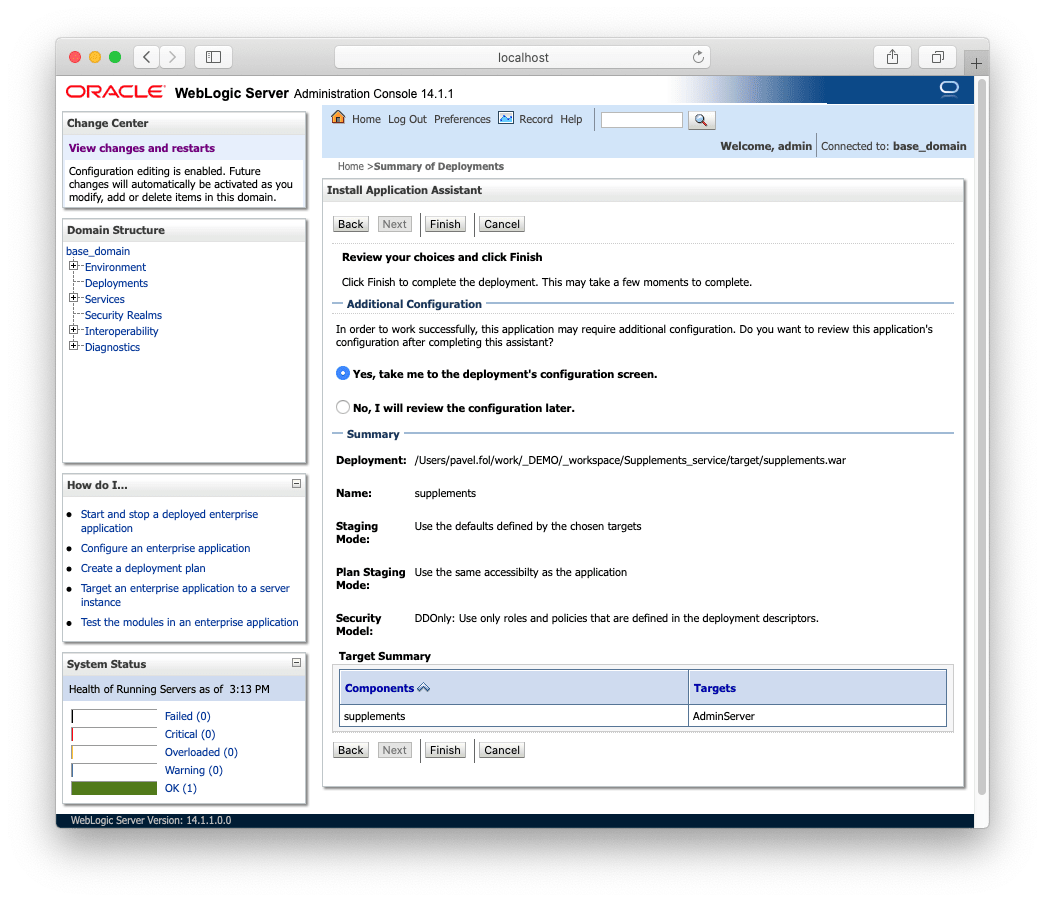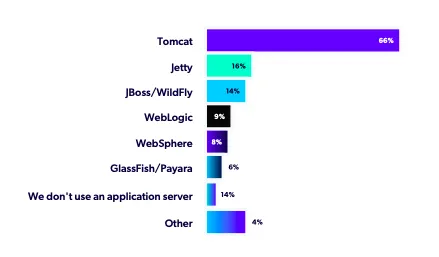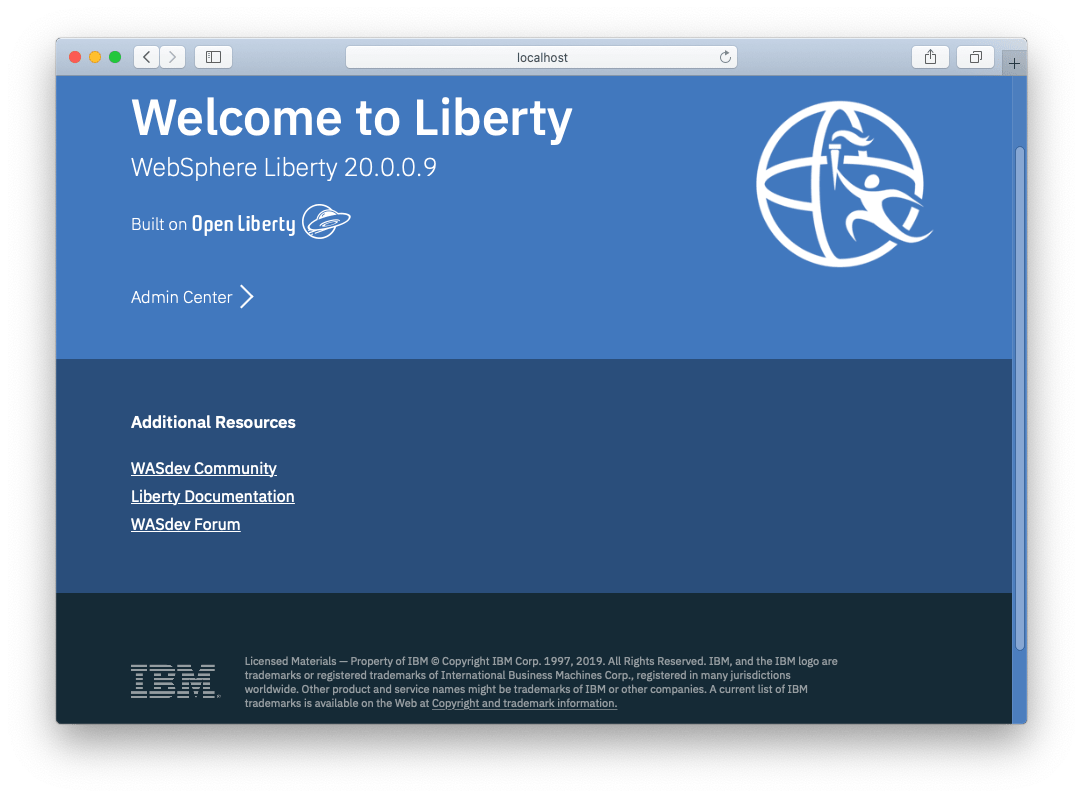With its extensive suite of enterprise functionalities, WebLogic is a popular choice for Java development. But how does WebLogic compare to other platforms and application servers?
In this blog, we give an overview of WebLogic, including how popular WebLogic is in 2025, use cases for WebLogic, and comparisons to other application servers such as Tomcat and JBoss / Wildfly.
Table of Contents
What Is WebLogic?
Oracle WebLogic Server is a scalable, enterprise Java platform application server for Java-based web applications. The WebLogic Server mediates the exchange of requests from the client tier with responses from the back-end tier.
WebLogic allows users to develop and deploy an application that has business logic and allows the application to access other services like database, messaging, or other enterprise systems. It is a robust platform for distributed applications.
Originally, WebLogic wasn’t always in the Oracle portfolio. In fact, it joined the Oracle product portfolio in 2008 when BEA Systems, a software company that developed it, was acquired by Oracle. WebLogic Server offers a robust, highly available, and secure environment for critical applications.
What Is WebLogic Used For?
WebLogic is a platform where you deploy your Java application and everything else is handled by the server. When clients make a request to a web application the web server will handle the request and delegate its processing to the required service. If the request requires reading data for example from the database, WebLogic will take care of it. The client doesn't know what happened in the background and is served with the required content.
In fact, the server is usually used in the production environments, where there are many clients making thousands of requests every time and the server must be able to serve all of them without any issues. To achieve stability and high availability, usually, load balancing and scalability is used within the application server. The application can be deployed to the server in several ways. Below is the example of deploying the application using the Administration Console.

Is WebLogic Popular?
WebLogic is popular within the commercial sphere — where companies require reliable software that comes with enterprise support. According to the 2025 Java Developer Productivity Report, 66% of respondents said they use Tomcat as the application server for their main application, with Jetty (16%), JBoss/Wildfly (14%), WebLogic (9%), WebSphere (8%), and Glassfish/Payara (6%) taking near even shares of the remainder.

Source: 2025 Java Developer Productivity Report
Another 7% respondents said they don’t use an application server, and nearly a quarter of respondents selecting more than one application server option. If you only consider servers that implement Jakarta EE Full Profile specification, WebLogic is dominating the market.
Curious what technologies your peers are using in their Java tech stacks? Find out in the 2025 Java Developer Productivity Report.
WebSphere vs. WebLogic
WebSphere Application Server (WAS) is a web application server that is used as a middleware to host Java-based web applications.
Developed by IBM, WAS is written in Java so it can be run on any operating system where Java is supported. While writing this article, Version 9.x of WAS supports Java EE7 Full Profile. You may also hear the word “Liberty” with a connection to WAS. WebSphere Liberty is a lightweight application server with low overhead that is designed for cloud applications and microservices.
If you are a single developer, both editions are free for development purposes. In an environment where more than one person is using the server, the purchase of a commercial license is required.
 Back to top
Back to top
WebLogic vs. Tomcat
While Apache Tomcat is the most popular application server, it offers a limited set of features from the Jakarta EE Full Profile specification, such as Java Servlet or JavaServer Pages. For some enterprise applications, however, that limited feature set might not be enough.
| WebLogic Benefits | Tomcat Benefits |
|---|---|
| Java EE 8 Compatible Implementation | Free and open source |
| Extremely scalable | Lightweight |
| Administration console | Low memory footprint |
| Integrates well with other Oracle products |
Offering limited features makes Tomcat a lightweight server with quick redeploys. But because it's lightweight, it suffers in usability. If the application requires more Java EE features, WebLogic is often the better choice.
🐱 Learn more about Apache Tomcat: read the blog.
With WebLogic, users get access to the commercial support from Oracle. Apache Tomcat doesn’t have dedicated support, but you can get support for Tomcat from OpenLogic by Perforce.
OpenLogic provides support for:
- Tomcat security, including preventing issues like the Ghostcat vulnerability.
- Tomcat clustering, including Tomcat 7 and Tomcat 8.
- And so much more.
Back to topGet Support For Tomcat
Whether you're considering a migration from WebLogic to Tomcat — or you're already using Tomcat and want support — OpenLogic experts can help. Get in touch today to learn how.
WebLogic vs. JBoss / Wildfly
Two application servers that play a big role in an enterprise sphere are WebLogic and JBoss / WildFly. Both offer full support for Java EE 8. One of the key differences is that JBoss / Wildfly is open source and free while WebLogic is paid product with commercial support. Red Hat also offers commercial support for a fee.
📚 Learn more about how JRebel integrates with WebLogic.
| WebLogic Benefits | JBoss / Wildfly Benefits |
|---|---|
| Developed by Oracle | Free and open source |
| Extremely scalable | Offers support for JBoss EAP (paid) |
| Everything manageable from the Administration Console | Jakarta EE Full platform implementation |
Final Thoughts
If you are considering a tool for a production environment with a heavy load and you also need most or all from the Java EE specification, WebLogic is a good candidate. While there are other servers that have similar functionality, one of the advantages of WebLogic is its excellent integration with other products from Oracle.
WebLogic Server is a commercial product that requires buying a license, but you will get access to enterprise support as well. Due to all its features, WebLogic isn’t really a lightweight solution, so make sure you compare the servers well before choosing for one — including redeploy times.
Fortunately, there's a solution to long redeploy times. With JRebel, you can eliminate redeploys in any application server and IDE while maintaining application state. These time savings are more than just spare minutes; they add up to real business value.
Want to see how JRebel can speed up development for your WebLogic application? Start your 14-day free trial today and see how much time you could save.